10 items found
Page 1 of 1
-
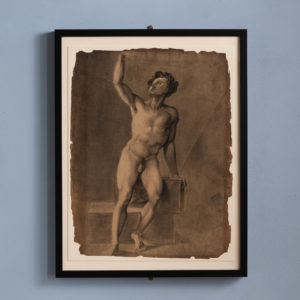
Early Nineteenth Century Nude Study,
£750Early Nineteenth Century Nude Study,
An early nineteenth century framed charcoal life-study of a male figure. The muscular figure is shown full length and front-on, contraposto, with arm upraised in a pose recollecting the Laocoon or Michaelangelo's Punishment of Tityus, now in the Royal Collecion.£750 -
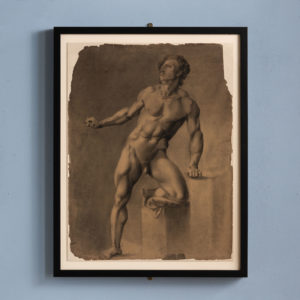
Early Nineteenth Century Nude Study,
£750Early Nineteenth Century Nude Study,
An early nineteenth century framed charcoal life-study of a kneeling male figure. The muscular figure is shown full length and front-on in a serpentine pose recalling the Laocoon and Michaelangelo's Punishment of Titus, now in the Royal Collecion.£750 -
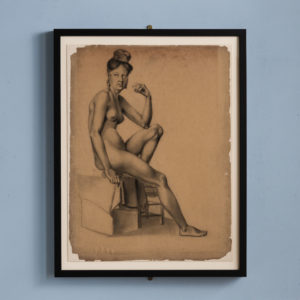
Early Nineteenth Century Nude Study,
£750Early Nineteenth Century Nude Study,
An early nineteenth century framed charcoal life-study of a female figure. The figure drawn full length and shown in half profile draws on the classical topos of the Bathing Venus as expressed most famously in the Farnese and Borghese Venuses as well as the Lely Venus, now held in the Royal Collection.£750 -
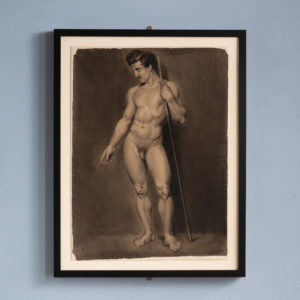
Early nineteenth century nude study,
£750Early nineteenth century nude study,
An early nineteenth century framed charcoal life-study of a male figure. The figure is shown heroically nude, from the front, in a full length, slightly serpentina pose with the right arm radiating from the torso. The composition is depicted contraposto and leaning on a spear or staff. The pose depicted is shows a slightly adapted and altered rendering of the famous Doryphorus, or Spear-Barer of Polykleitos. Polykleitos was known as the best sculptor of men in the ancient world, with the primary subjects of his works being male athletes with idealised body proportions. He was interested most chiefly in the mathematical proportions of the human form, which led him to write an essay the famous Kanon, on the proportions of humans. The Doryphoros is an illustration of his writings in Kanon on the symmetry between the body parts£750 -
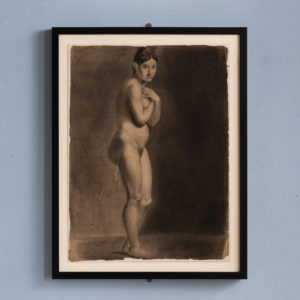
Early nineteenth century nude study,
£750Early nineteenth century nude study,
An early nineteenth century framed charcoal life-study of a female figure. The figure, shown side-on, models the Pudica pose, an affected posture of chaste virtue, inherited from classical art.£750 -
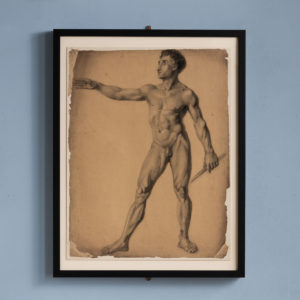
Early nineteenth century nude study,
£750Early nineteenth century nude study,
An early nineteenth century framed charcoal life-study of a male figure. The figure is shown heroically nude, from the front, in a full length, adlocutio pose, contraposto and grasping a shaft or baton. The pose is a famous one in Classical Art, said to embody power, control and leadership, and its most famous example is the Augusto di Prima Porta in the Vatican Museums in Rome.£750 -
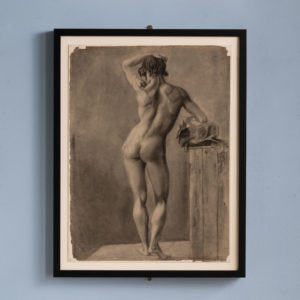
Early nineteenth century nude study,
£750Early nineteenth century nude study,
An early nineteenth century framed charcoal life-study of a male figure. The figure is shown from behind in full length, contraposto, with developed musculature and a sinuous, dramatic, figura serpentina recollecting the Dancing Faun of the Uffizi, and the famous Farnese Hercules.£750 -
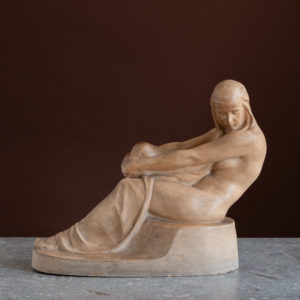
Art Deco Terracotta Mantle Figure of a Reclining Female.
£500Art Deco Terracotta Mantle Figure of a Reclining Female.
The patinated cast terracotta figure of a reclining female, head bowed, with one leg drawn towards her, and draped material over her legs. An indecipherable signature to base. Possible French.£500 -
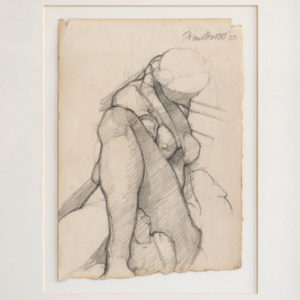
Nude Study by Francis Hewitt
£300Nude Study by Francis Hewitt
Pencil sketch signed and dated 50. In plain wood frame, floated within a cream mount.£300 -
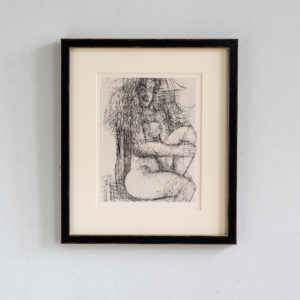
Cahiers D’Art 1953
£220Cahiers D’Art 1953
Cahiers D’Art was a journal, founded by the art critic Christian Zervos, in Paris at 14, rue du Dragon. It was published from 1926 to 1960, with a wartime interruption 1941 to 1943. Zervos was a Greek-French art historian, critic, collector, writer and publisher. The journal was noted for the quality of its articles and illustrations which unusually promoted Modern Art from all over the world rather than just Europe.£220
Featured Items
-
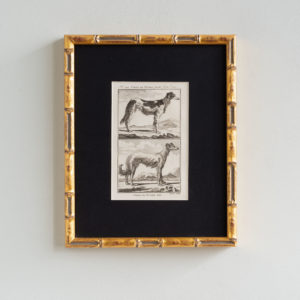
18th Century French Engravings of Dogs
£175 each18th Century French Engravings of Dogs
Published for, Histoire naturelle, générale et particulière (1749–1804), which was the first modern attempt to systematically present all existing knowledge in the fields of natural history, geology, and anthropology.£175 each -
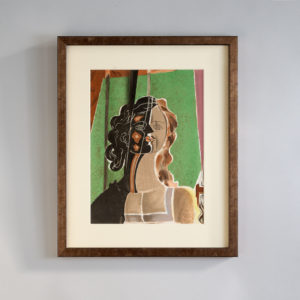
Figure by Georges Braque, Verve Vol 2 / No. 5-6.
£800Figure by Georges Braque, Verve Vol 2 / No. 5-6.
The Verve Review was a purposefully luxurious. It ran from 1937 to 1960, but with only 38 editions available, due to the high degree of design and editorial work dedicated to each issue. Each edition contained unique lithographic prints, commissioned by the editor, and each cover a double-page lithograph elaborated by one of the artists contained within. It was the brainchild of its editor Stratis Eleftheriades, a Greek National who moved to Paris in the early thirties to take part in the growing Modernist movement, writing under the name of Teriade.£800 -
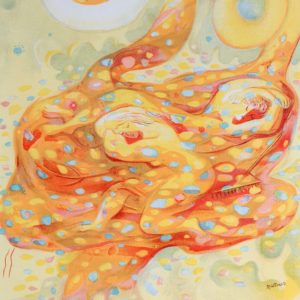
Autumn by Abraham Rattner, Verve Vol. 1 / No. 3.
£600Autumn by Abraham Rattner, Verve Vol. 1 / No. 3.
The Verve Review was a purposefully luxurious. It ran from 1937 to 1960, but with only 38 editions available, due to the high degree of design and editorial work dedicated to each issue. Each edition contained unique lithographic prints, commissioned by the editor, and each cover a double-page lithograph elaborated by one of the artists contained within. It was the brainchild of its editor Stratis Eleftheriades, a Greek National who moved to Paris in the early thirties to take part in the growing Modernist movement, writing under the name of Teriade.£600 -
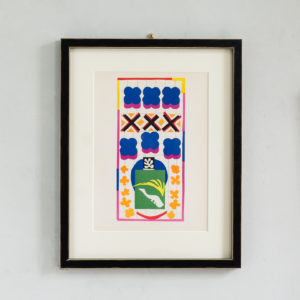
Henri Matisse, ‘The Last Works of Henri Matisse’
£900 eachHenri Matisse, ‘The Last Works of Henri Matisse’
From Verve Vol. IX No. 35/36 published by Tériade under the title 'The Last Works of Henri Matisse'£900 each
